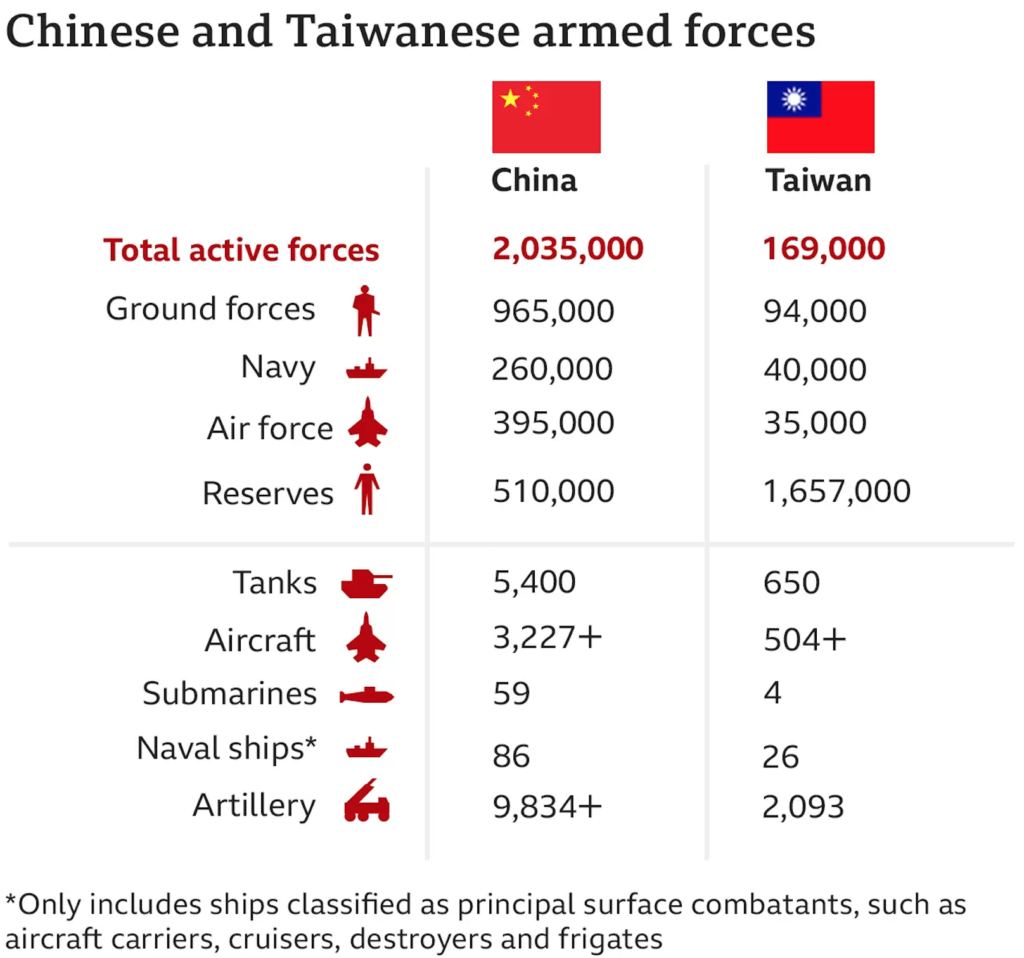- Ukraine has made use of equipment and smaller weapons systems like man-portable missiles and drones as a form of defense against Russia.
- Tensions between China and Taiwan suggest that a Chinese invasion could take place on the island.
- Taiwan is looking at Ukraine as an example of how it could defend itself against the larger Chinese Armed Forces.
When a wild animal – such as a tiger or a lion – tries to attack a porcupine, it is surprised by the resistance and resilience of the potential prey.
Despite the greater size and strength of the tiger, the small prey is able to use its thorns to protect itself and eventually injure the aggressor in case of a sharper attack.
Most porcupine attacks are not fatal to their large predators, but the pain of stepping on the animal’s thorns becomes the main impediment to crushing it. But if the predator still decides to attack the porcupine, it will suffer a painful punishment and will eventually give up.
This strategy is used in cases of conflict between countries with asymmetric military forces, with a very powerful country against another country with few military resources.

What is an Asymmetric Warfare?
The Concept of Asymmetric Warfare describes a type of war conflict in which one of the belligerents, at least at some point, has military and/or technological superiority on the battlefield.
Therefore, the main characteristic of this type of war is the inequality of resources between the two belligerents, referring to the use of “unconventional warfare” strategies, such as guerrilla warfare and insurgencies.
One example is the war in Ukraine provoked by Russia. The difference in military strength between the two sides of the conflict is huge. According to CNN, in 2021 Russia invested almost US$ 45.8 billion in the country’s defense sector, while Ukraine invested almost 10% of this amount, about US$ 4.7 billion.
How can the “Hedgehog” strategy benefit the weaker side in an Asymmetric War?
The hedgehog strategy is based on the use of smaller weapons compared to its more militarily powerful rival. The weaker country should invest in as many “anti-ship” weapons as possible, “air-launched marine mines”, “portable surface-to-air missiles”, and “shoulder anti-armor missile launchers”. the Stinger portable surface-to-air missile and the FGM-148 Javelin portable anti-armor missile launcher.
At the same time, investing in smaller weapons does not mean abandoning high-tech conventional weapons, but instead the focus should be on using smaller, more versatile weapons.
These small and numerous weapons are fundamental for the defense of the country, with the creation of strategies based on its geography, promoting a defensive advantage in relation to its belligerent rival.
How is Ukraine using the “Hedgehog” strategy to defend itself against Russia?
Despite the support of NATO (North Atlantic Treaty Organization), Ukraine has benefited from the strategy through investment in smaller, lighter and less expensive weapons and equipment, which, like the porcupine, can cause great damage to the most aggressive aggressor. strong, without necessarily completely defeating it.
Ukraine has invested in cruise missiles, drones, mines, portable anti-armor and anti-aircraft missiles, and mortars that make it very difficult for Russia to act in its territory and transforming the invasion into a very arduous and damaging job for Moscow.
So even though Kiev suffers from the fallout from the Russian invasion, the country refuses to facilitate Putin’s goals. Zelensky’s strategy, resistance and resilience are fundamental for the country’s defense, which may cause Russia to withdraw from the invasion due to the high military and human cost of war.
How is Taiwan learning from Ukraine to defend itself against potential Chinese aggression?
Tension between China and Taiwan has been building for decades, and the possibility of an invasion by the large Chinese People’s Liberation Army is becoming more and more likely depending on the outcome of the Russian invasion of Ukraine.
If China invades Taiwan, an asymmetrical war would break out, but the war between Moscow and Kiev proves that the imbalance of forces is not always reflected in the results of the conflict.
Under review, China has a defense budget 13 times that of Taiwan, plus more troops, weapons, equipment and a population of 1.4 billion, versus Taipei’s 24.5 million.

After observing the war on Ukrainian territory, the Quadrennial Defense Review of Taiwan states that “Resist the enemy on the opposite bank, attack him at sea, destroy him in the coastal zone and annihilate him on the beachhead“.
According to the report, Taiwan is closely watching how Ukraine inflicted losses on Putin’s forces to learn lessons on how to successfully defend itself against an invader with a larger army and weapons, reinforcing the implementation of the hedgehog strategy.
If Taiwan continued its previous goal of investing in heavy and expensive equipment, such as fighter jets, helicopters and tanks (tanks), to prepare against a possible Chinese invasion, defense experts say that these would be easily destroyed by the great rival.
What is the importance of the “Hedgehog” strategy in future conflicts between nations and their geopolitical consequences?
The hedgehog strategy became relevant because it gave countries with less military capacity the possibility of defending themselves against great military powers.
In the near future, the tendency is for the great powers to think twice before invading small countries based on their lower military capacity, given what happened in Ukraine.
Obviously, if the attacked country is extremely poor and without resources to acquire the minimum of small high-tech and small-scale weapons systems to defend itself, the hedgehog strategy will be less efficient and will encourage a possible aggression by the stronger actor.
At the same time, the Taliban against the US military proved that even a much weaker side can tire the stronger side if it can hold out for too long a period.
The geopolitical consequences are accentuated when one observes that, at the current moment, the definitions of power are being subtly modified.
Previously, the projection of force, or military power, of a country could be measured from the amount of investment in military equipment of a high technological standard.
Currently these parameters can also be influenced by the capacity of resistance and resilience of the nation, even with inferior military equipment, as well as Ukraine, thanks to the porcupine strategy and the human capacity to imitate nature.






日軍第731部隊旧址_PB121201-e1713902593308-300x224.jpg)







[…] So, in addition to Japan and South Korea having their own concerns about Chinese influence, these countries also share common strategic interests with the United States in possible containment of China and support for Taiwan in the event of an invasion. […]
[…] Beijing and Taipei have had diplomatic problems for years, but after Russia’s invasion of Ukraine, tension between the two governments has intensified. This is because when analyzing the war in Ukraine, Taiwan is concerned that the same could happen in its territory if there is a Chinese invasion. […]